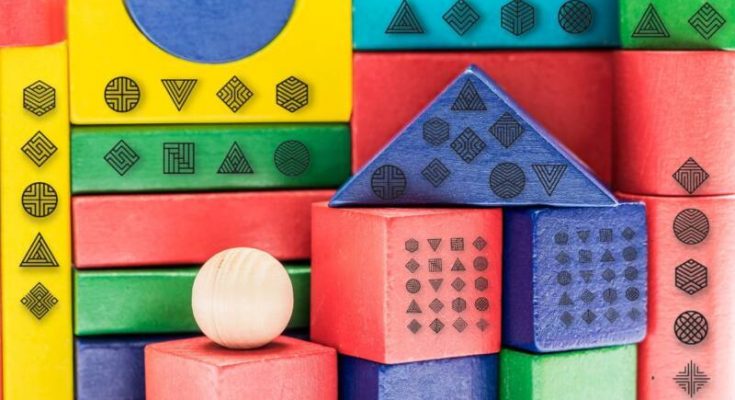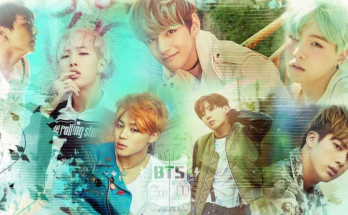The Sense and Significance of Shapes in Design.
The seven elements of design are the essential characteristics of any visual design, including color, form, line, shape, space, texture, and value. Designers use these elements to create aesthetic qualities that convey a specific philosophy, draw the eye in a particular direction, or evoke feelings. It triggers a satisfactory response in the viewer, which is universal, no matter where or when that viewer lives.
Shapes are more than just functional, formative tools: their meanings let designers communicate visually and are sometimes called shape language or shape psychology. Along with the other design elements, shapes enable designers to convey characteristics and emotions non-verbally.
Shapes have the sense and significance of dispositions and can make us feel a certain way. For example, lines, sharp edges, and angles illustrate strength, structure, and order. In contrast, a form with a round edge or with curves is softer, approachable, and represents connection and community.
Using shapes in the design layout designates ideas or concepts besides setting a mood or emotion. Shapes create a travel path for the eye around the design and generate depth or direction to connect content and imagery in a layout.
THE READING OF SHAPES
All geometric shapes around us are closed figures created using dots and lines. For identification, these shapes have names, for example, triangles, squares, circles, rectangles, ovals, etc.
The three main classifications of Shapes in design are geometric shapes, natural (or organic) shapes, and abstract shapes. Their meanings make a design different and suggest something subliminal about the brand (the company).
Geometric
When thinking of shapes, the first names that come to mind are circles, diamonds, ovals, rectangles, squares, triangles, etc., because names quickly identify these shapes. Straight lines and angles usually symbolize order and structure, while the shapes with curves are softer and represent connection and community.
Organic (or Natural)
Organic shapes, such as animals, clouds, hills, rocks, and trees, regularly surface in nature and seem curvilinear. Still, it can be artificial creations with components such as paint clumps or free drawings. Irregular natural shapes are composed of more flexible lines, are less proportional than inorganic shapes, and are soothing and approachable.
Abstract
The abstract is the simplified version of organic shapes and random discoveries. ‘Abstract’ means ‘to withdraw or separate something from something else.’ For example, icons are abstract shapes representing ideas and concepts; a stick figure is an abstract shape of a person, etc.
Geometric Shapes
SQUARES and RECTANGLES are unified construction that represents equality, simplicity, and symmetry. The popularity of a rectangle in logo design is because it is a familiar and trusted shape representing honesty, resilience, and stability.
The four even sides signify a robust and reliable foundation, reminding us to look for strength and balance in our lives. Finally, from a mathematical standpoint, the square symbolizes precision and accuracy. These shapes shout sensible,
suitable, and in accordance. Both forms are neither glitzy nor grandstander – some may even find them bland; however, clever designers know how to use them and add interest to a design.
All digital art consists of a grid pattern using rectangles and squares, which is why most text remains within these shapes. The eye scans these figures and stays within the borders while the designer manages the space and its influence.
More importantly, to abstract painters, the square is also the perfect expression of two-dimensional space. A conceptual artist utilizes square imagery to achieve an aggressive statement of flatness.
Cultural Impact
The square in Hinduism and Buddhism symbolizes being earthbound. However, when placed inside a circle (which symbolizes eternal whole), they represent the connection between the human and the divine.
TRIANGLES are attractive as they can be viewed differently depending on if their sides are equal or different in length, whether they are sitting unstable on their tip or steady on base. In addition, triangles have energy and power associated with them as they can point out the direction, depending on the positioning of their bottom.
Triangles associate more with a masculine shape. The triangle portrays power, progression, purpose, and direction. Triangles in pyramids, arrows, and not to mention their religious connections, particularly to the holy trinity, are great shapes to represent the Hero, the Ruler, and the Explorer – brand personalities.
Cultural Impact
The triangle, when balanced, is the symbol of justice, science, and religion. Triangle use in art and art forms has come from the Chinese and Persian cultures, where several people believe the triangle originated.
CIRCLES and OVAL shapes offer a positive emotional message of consonance and shield. For example, the circle in a logo often represents a commitment, community, love, or unity—curves project femininity when used in shapes, while straight lines are masculine.
We find the circle and the oval within nature in the sun, moon, earth, fruits, and flowers. Circles have a free sense of movement – balls, merry-go-rounds, wheels. The motion or their movement may also represent energy and power. Circles, curved lines, and ovals are complete and graceful, providing a sense of integrity and perfection. Circles are great shapes to represent the Caregiver, the Everyman, and the Innocent.
Cultural Impact
A circle (symbol Ο) is the set of all points in a plane at a fixed distance from a given moment, known as the circle’s center. A radius is a segment that joins the circle’s center to a point on the ring.
Humans have attributed to the circle ideals of unity, absoluteness, infinity, enlightenment, and perfection for generations across all regions and cultures. The wedding band, for example, is a worldwide symbol of commitment to marriage.
Within nature, we see SPIRAL shapes in shells, snails, whirlpools, and tornadoes to stars in the galaxy. Spirals depict evolution, growth, seasons, life circles, and time. Spirals convey life and death, fertility, and transformation. Being creative and, due to their curved nature, they also have a feminine feel.
Spirals can move clockwise or anti-clockwise, taking you on a journey. They are infinite, free-flowing, and open that can go on for an epoch.
Cultural Impact
The Spiral is an ancient intuitive symbol of spiritual growth and our identity with the universe. It is found in cultures worldwide and reflected in Shamanism, serpent cults, dragon lore, geomancy, magic, mysticism, and ritual art and dance throughout history.
BUILD YOUR BRAND.
Shapes are central to graphic design; by selecting the forms that provoke the desired response, designers can influence how people feel about the design and perceive what the shapes stand for.
Shape elements, even in photography, form patterns to emphasize part of the frame. Shapes can produce contrast between the subject and their environment.
Hence, building a brand that genuinely connects with your customer requires innovative and analytical creators. So, make sure you find designers who comprehend shapes’ identity, understand the fundamentals of communication, and, most notably, are thinkers!
Addendum
Human body
Most individuals are distinctive blends of the three body types: ectomorph, endomorph, and mesomorph. You could visit a lab to get a precise assessment and calculate your body fat, bone, and muscle mass. Further simplified are 12 types of body shapes:
- Apple
- Athletic
- Diamond
- Hourglass
- Inverted triangle
- Lollipop
- Oval
- Pear
- Skinny
- Spoon
- Straight
- Top Hourglass
This information about body types is to understand the sense and significance of shapes. The magnificence of nature embraces inner beauty, love, and peaceful souls, and all of that is in abundance around us.
#shape #design #tusharunadkat #thewfy #likeminded #reader #share #like





